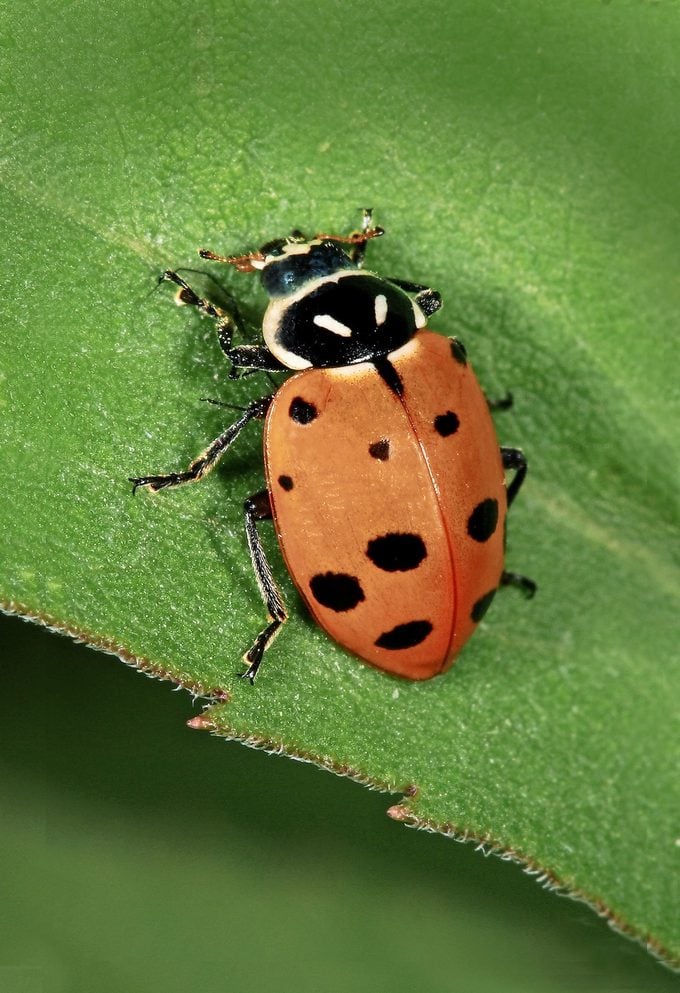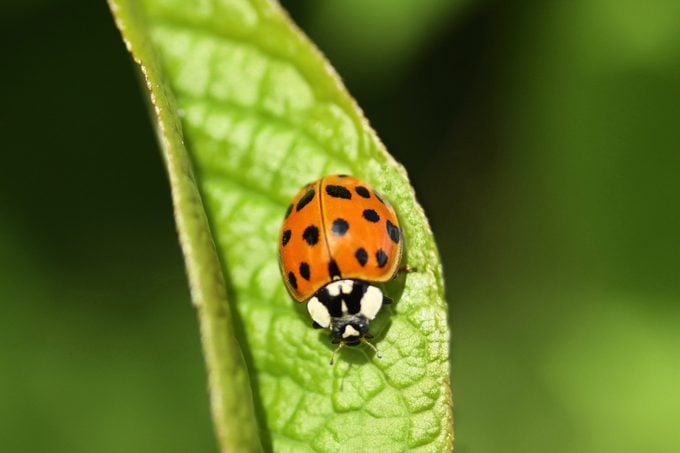Ladybug vs Asian Beetle: What’s the Difference?
Updated: Sep. 08, 2022
Ladybugs eat garden pests, but they have a non-native lookalike—the Asian lady beetle. See the difference between a ladybug vs an Asian beetle.
How to Identify a Ladybug vs an Asian Beetle

Our native ladybugs are welcome guests in gardens, backyards and farm fields because they nosh on plant-eating insects, like aphids, mites and mealybugs. But the ladybug’s nonnative look-alike, the Asian multicolored lady beetle, has a bad reputation. They’re the bothersome creatures that nudge their way into the warmth of your home during winter. Look for distinctive markings to help you tell the difference between a ladybug vs an Asian beetle.
Learn how to get rid of stink bugs.
Ladybug Features
- Antennae, near the eyes, help poor-sighted ladybugs smell, taste and feel their way around.
- Hard shells (elytra) cover and protect the wings. Dots on the left are a mirror image of those on the right.
- Pronotum is a platelike structure that protects the ladybug’s head. It has two white dashes on top.
- Short legs secrete poisonous gel if the bug is caught by a predator.
- Black spots on the orange shell alert predators that this creature tastes bad.
- The convergent lady beetle eats pesky insects in gardens throughout North America.
Discover 7 fascinating ladybug facts you didn’t know.
Asian Lady Beetle Features

- You can easily tell Asian lady beetles from other native ladybugs by the marks behind the head. Look for a black “M” shape on the pronotum.
Next, meet more helpful garden beetles you should know.




















